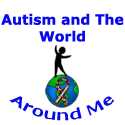Sound Based Therapies
>> Saturday, March 14, 2009
Sound based therapies include interventions that address auditory, listening, and vestibular issues. The term "sound-based therapies" embraces all components of other terms such as "listening therapies" or "auditory retraining therapies." Most individuals have issues in one or more of the above areas. The etiology of these difficulties is unclear. They could be related to the repeated inner ear infections that many experience as babies and the treatment used to ameliorate them. Sound processing difficulties manifest themselves as impaired ability to perceive process and/or respond to sound appropriately. Many individuals with autism spectrum disorders also demonstrates problems with sound sensitivities and/or processing. Both under- and over- sensitivities to sounds are common. Those who are hypo-responsive to sound and "tune out." The symptoms of hyper-sensitivity include crying, covering the ears, running from the sound source, and temper tantrums. Inconsistencies in hearing the various frequencies of sound or lack of synchronicity of the two ears, can result in behavior that is distractable, avoidant, hyperactive, inattentive, or bizarre.
Dr. Alfred Tomatis is considered the father of all sound-based therapies. He was the first to define the difference between hearing and listening, the first to recognize the close relationship between auditory and vestibular systems, the first to recognize the importance of high-frequency, audition, and the first to identify a connection between the voice, the ear, and the brain. In the 1950's he developed the first technique to "re-educate the ear." Thomatis stated that while hearing is fully functional at four-and -one-half months in utero, listening, like vision, must be learned. Tomatis connected listening to the development of receptive and expressive language, learning , motor control and motivation. The Tomatis Effect states that: 1.) the voice only contains the harmonics that the ear can hear. 2.) if you give the possibility to the ear to correctly hear the distorted frequencies of sound that are not well heard, these are immediately and unconsciously restored into the voice. 3.) The imposed audition sufficiently maintained overtime, results in permanently modify the autition and pheonation. 4.) Bottom Line: The voice can produce what the ears hears. The Tomatis Effect has strong implications for autism, attention deficit disorders, dyslexia, and other autism spectrum disorders.
After the death of Tomatis in 2001, his protege, Canadian psychologist Dr. Paul Madaule became the disciple for his work. Madaule was dyslexic an clumsy as a child, and he studied with Tomatis in France. After he conquered his reading disability, he vowed to use the Tomatis Method to help others. He founded many Tomatis Centers in North America including the Listening Centre in Toronto, Ontario, Canada. You can visit their website at The Listening Centre.
Dr. Guy Berard who was also a French physician who studied with Dr. Tomatis, believed that most of Tomatis protcol was unnecessary. Based on irregularities in the audiograms of more than 8,000 patients, he could conclude that some people hear some sound frequencies more clearly than others, and that their combination of hypo- and hyper-sensitivities to sounds negatively impacts their development of phonological awareness and language. The end product is delayed or decreased comprehension, poor articulation, and/or decreased inappropriate expression. Berard postulated that the quality of the perception of sound that one hears is equal to the behavior of the individual. He formulated his own theory that "human behavior is greatly conditioned by the way one hears." His theory evolved further as he watch the audiograms of children with disabilities change along with their behavior.
In 1978 audiologist David Kemp began conplucting research on otoacoustics emissions. This phenomenon identified in the late 1940's states that the ear not only takes in and sends sound to the brain, but also emits a sound, most likely from the cochlea. About the same time, Sharry Edwards who was a college student, was searching for an explanation for why she heard emating from the people around her. She claimed to be able to identify people by their sound, and believed that each person resonates a unique frequency. Three different sound laboritories conducted independent testing of Edward's voice; all confirmed that she could produce a pure tome sine with her voice.
Edwards postulated that if key frequencies are out-of-balance in the ear, then they are also out-of-balance in the voice. For over 30 years Edwards has increased her unique knowledge of the voice-ear connection and concluded that the voice is a hologram of the body's emotional. physical, and spiritual components. Eventually her knowledge led to the development of the sciences of BioAcoustics TM, which uses a "voiceprint" to evaluate a person's state of health by analyzing the frequencies of all cellular structures in the body, and their relationship to each other.
Glitter Text Generator




0 special comments:
Post a Comment